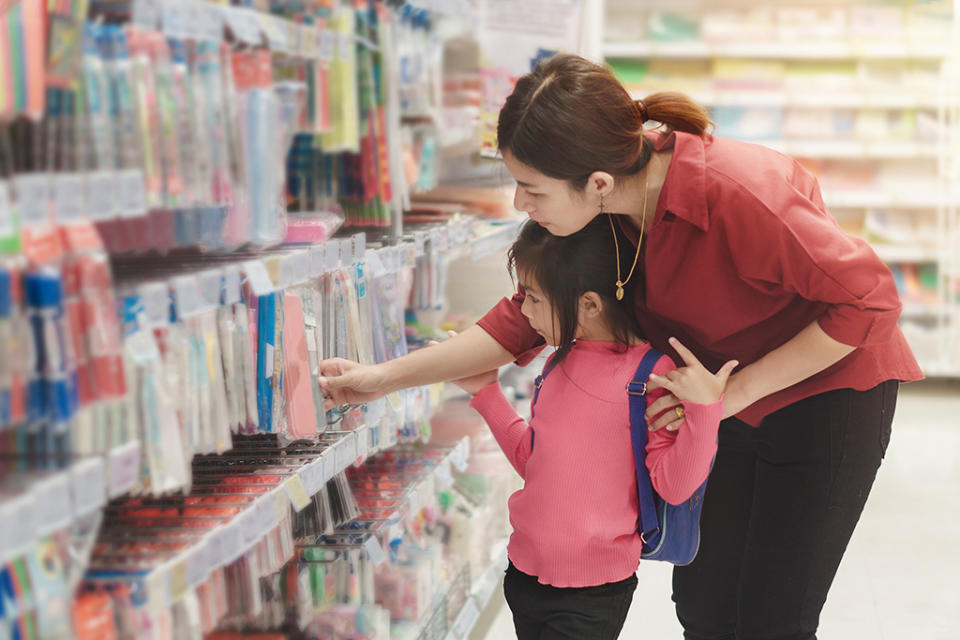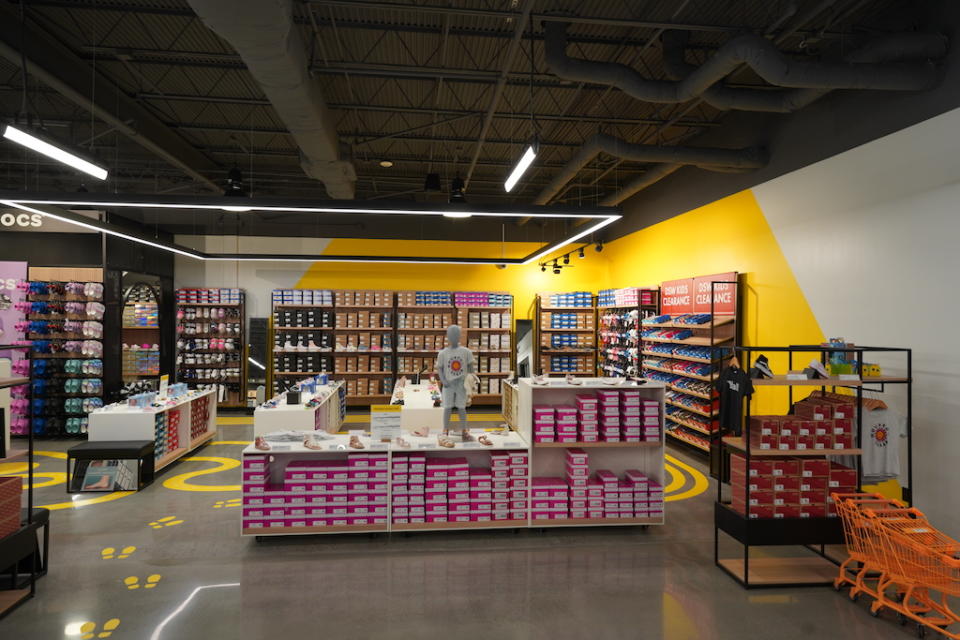Why Shoe Retailers Can Win Over Value-Hungry Shoppers This Back-to-School Season

Shoe prices are rising at the fastest rate in decades. But that’s not deterring 35-year-old sneaker-lover Michael Kilbourn from buying cool kicks. Instead, the law student and father of two sons, aged 10 and 7 — whom he co-parents with their mother — has opted to sacrifice certain elements of choice within different sneakers, like colorways, to go for the cheaper option to save money.
This move is especially cost efficient when it comes to buying for his kids, who outgrow and wear out their shoes more often than he does. But swearing off sneaker purchases entirely was never an option, even with prices the way they are.
More from Footwear News
Decreasing Apparel Prices Are Helping to 'Drive Down' Online Retail Inflation, According to Adobe
Footwear Executives Are Concerned About the Economy and a Decline in Shoe Shopping
“It’s a piece of what we value pretty deeply,” Kilbourn said. “Sneakers are a big piece of our lives.”
Apparel and footwear technically live in the discretionary category, which should make them the first items to go when food prices rise 10.1% year-over-year, as they did in May. However, consumers like Kilbourn are showing a reluctance to give up on buying the shoes they want, indicating a heightened sense of consciousness around what they wear as offices reopen and live events resume. As such, apparel and footwear will likely rank lower on the list of categories seeing spending cuts from consumers in the months to come, experts say.
“I think consumers would rather go out to eat a little bit less than not get the latest pair of the footwear they’re looking for,” said Scott Rankin, advisory leader for KPMG’s consumer and retail sector practice. This phenomenon explains, in part, why the footwear industry is in a relatively stable position amid inflation compared to other industries.
According to Matt Priest, president and CEO of the Footwear Distributors and Retailers of America (FDRA), the shoe industry has a tendency to be “recession resilient” or even recession-proof.
“If purchases on larger appliances, automobiles or bigger-ticket items start to wane, they often turn to purchasing a pair of shoes to get that feel-good moment,” Priest explained. “It’s one thing to drop $800 or $1,000 on a washer or dryer. It’s another thing to spend $150 on a pair of shoes.”
Even with this advantage, shoe retailers must still figure out how to win over deal-hungry shoppers amid record-high levels of inflation, especially as the critical back-to-school shopping period approaches.
U.S. retail sales, excluding car sales, are expected to grow 7.5% between mid-July through Labor Day from the same period in 2021, according to Mastercard SpendingPulse, which records in-store and online retail sales across all forms of payment. However, this projection is not adjusted for inflation, which rose by 8.6% in May compared with a year ago.
Persisting high prices have already spooked consumers, many of whom reported feeling record levels of concern about mounting inflationary pressures in May, the Federal Reserve Bank of New York’s Center for Microeconomic Data found. At the same time, consumers had a lot more disposable income this time last year, thanks to the distribution of stimulus checks, which have since dried up.
The back-to-school season is often viewed as an early indicator for shopping behavior ahead of the holiday season. This year, first and foremost, shoppers want value. And they might be willing to change old buying habits to get it. A recent CivicScience survey showed 22% of shoppers plan to spend less this year on back-to-school shopping, and over 50% of parents said they have become more price sensitive in the last year.
For many parents and caretakers, spending on back-to-school items is unavoidable. Kids grow out of their clothes, shoes and backpacks. Sometimes, higher prices just need to be absorbed. On top of that, the vast majority of students are headed back to a live classroom setting after two years of remote-and-hybrid learning, which means sweatpants and T-shirts will no longer cut it.

Chanintorn.v - stock.adobe.com
“Relative to the last two years, the desire for clothes and school supplies will be higher than it has been in the past,” explained Rick Maicki, managing director in Berkeley Research Group Corporate Finance, specializing in performance improvement. For the most part, retailers are confident that their strong inventory positions are enough to cater to this demand.
Reeling from supply chain delays and product shortages last winter, retailers got an early start on placing orders for the back-to-school season. As such, some companies have found themselves sitting with higher-than-usual inventory levels, which could be helpful once demand picks up.
At Shoe Carnival, inventories were up about 20% in Q1 compared with 2021, which CEO Mark Worden said would position the company “to win the back- to-school season.” At Genesco, the parent company for Journeys, CFO and SVP Thomas George said that higher-than-usual inventories due to late deliveries in the winter will give the company “a head start on back-to-school and holiday sales.”
Executives from Kohl’s, Dick’s Sporting Goods and Academy Sports said in recent calls with investors that their strong inventory positions will help them to cater to back-to-school demand this year.
Brian Burnett, VP and GMM of Rack Room Shoes, told FN in a recent webinar that the family footwear chain is “cautiously optimistic” for the back-to-school season, given the retailer’s strong inventory position and value proposition.
Noting that most Rack Room consumers come from average-income families, Burnett stressed the power of the need to buy items for a “feel-good moment.” In rough economic times, this moment can more easily be attained through shoes and clothes, he said.
DSW chief merchandising officer Jim Weinberg said he expects the back-to-school season to be more promotional than last year, when demand far outweighed supply.
“The demand is in line with what we thought and we’re able to access product far greater than we were a year ago,” Weinberg said, adding that DSW is changing the design of some of its stores to be more kid-friendly.
DSW is also continuing a partnership that it tested with Staples last year in which the shoe retailer stocks a curated selection of school and office supplies in some stores. This year, DSW will offer this at half of its locations to help round out consumers’ back-to-school purchases this season.

Courtesy
But having high levels of inventory might not be enough to reel in shoppers, especially if they can get a better deal elsewhere. According to KPMG’s June Consumer Pulse summer survey of 1,000 consumers, almost 70% of shoppers said they plan to shift their discretionary spending to non-discretionary items. Almost six in 10 plan to change their behaviors by buying fewer items, bargain-hunting and substituting items with lower-cost brands or switching retailers.
To find cheaper options without sacrificing quality, some consumers are turning to resale and off-price shopping channels that offer more bang for their buck. The U.S. secondhand market is expected to more than double by 2026, hitting $82 billion, according to a recent report from resale platform ThredUp and GlobalData.
From June 1 to 14, searches for backpacks on ThredUp increased 48% and searches for kids’ items increased 50%, compared to the period between May 18 and 31.
“In a time where retailers are struggling with excess inventory that doesn’t match consumer needs, resale has been a bright spot for consumers providing them with value and convenience,” said Erin Wallace, ThredUp’s VP of integrated marketing, in a statement. “As inflation persists and parents start to shop for the upcoming back-to-school season, our internal data suggests they are continuing to think secondhand first.”
The off-price sector is bracing for a similar surge in momentum.
“Off-price retailers are always prepared for back-to-school,” said Brett Rose, CEO of United National Consumer Suppliers, which sources products to several off-price retailers, including Ross Stores and some TJX-owned locations.
Given the high levels of inventory in the market, Rose said “retailers need to be a tad more competitive” to win over consumers in a tight financial environment. Many consumers will turn to off-price stores as their first choice to find certain “brand agnostic” items like notebooks and pens, he said.
“Maybe they’re going to look at Walmart, but they’re also going to look at Dollar Tree and Dollar General because they realize they can get the same thing,” he said.
Best of Footwear News
Sign up for FN's Newsletter. For the latest news, follow us on Facebook, Twitter, and Instagram.

